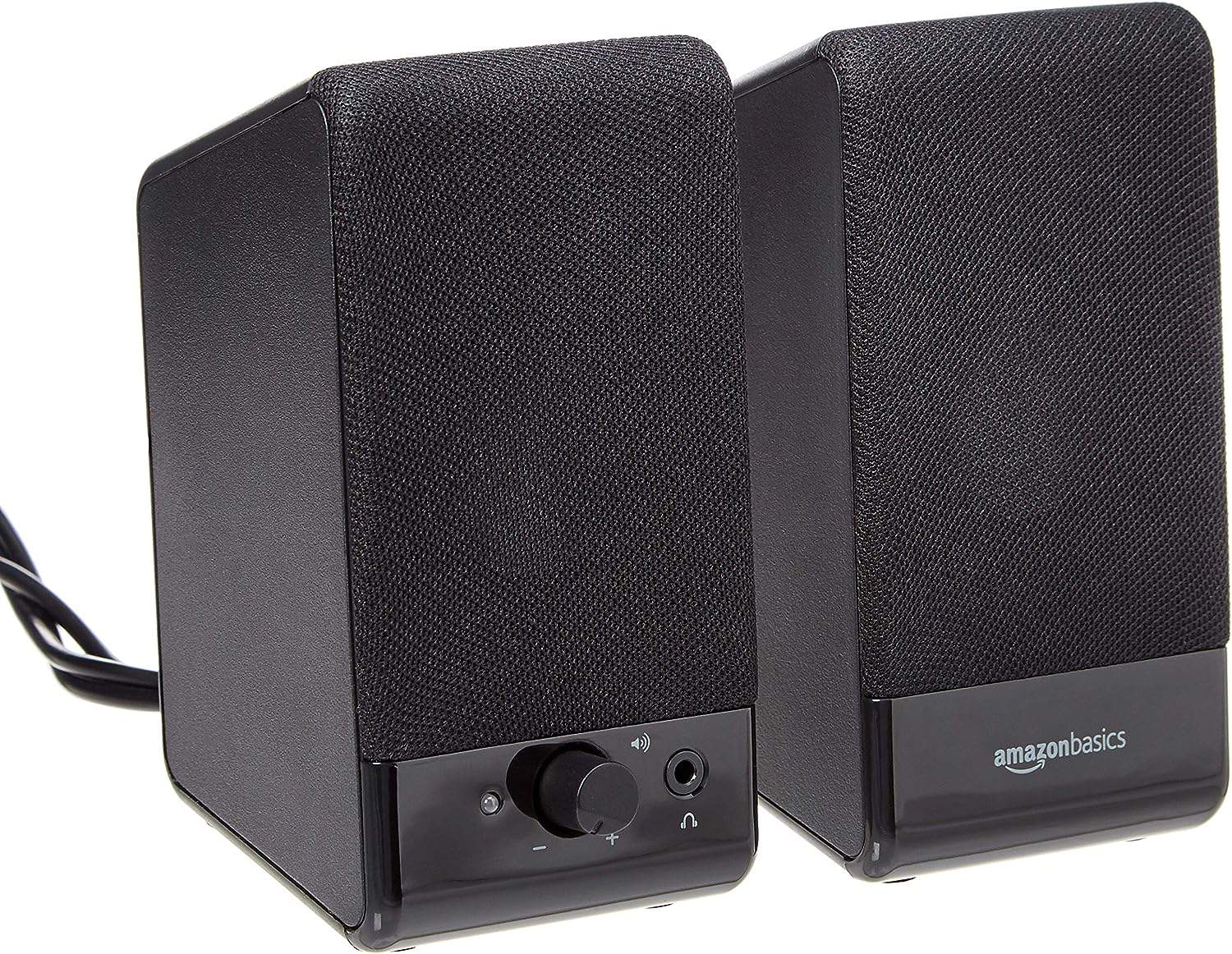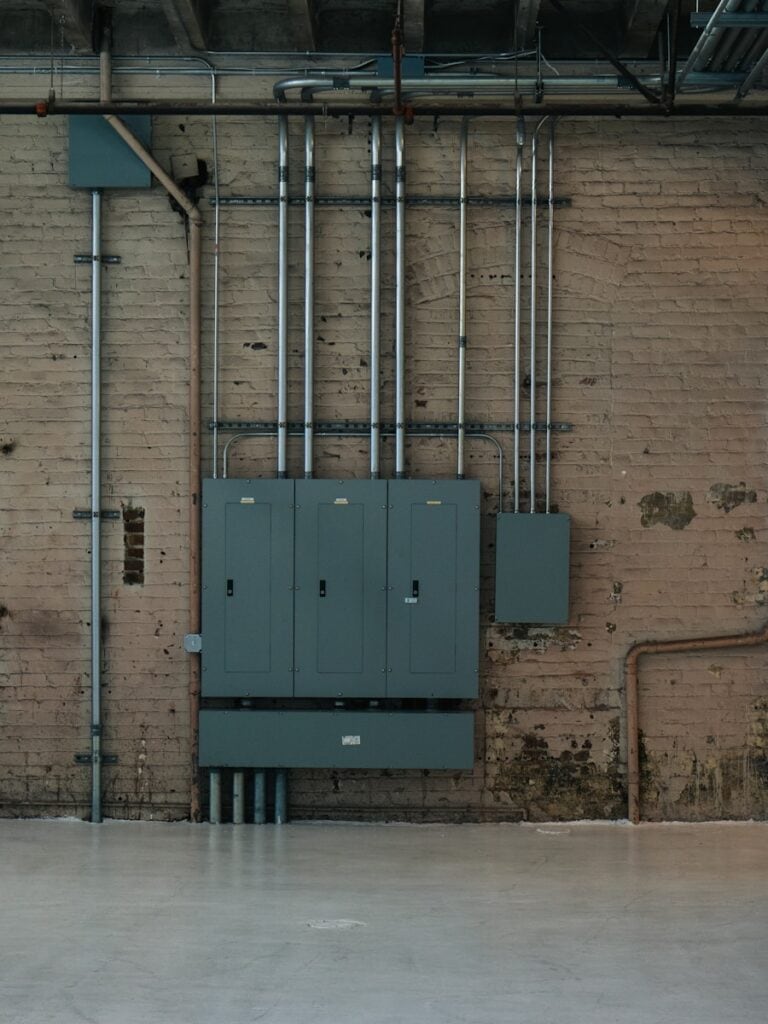Having issues with your speakers? Before buying new ones, try basic troubleshooting and repairs to save money and extend their lifespan.
Speakers may look complex, but most problems are caused by a few common issues that you can often fix yourself. This guide will walk you through troubleshooting, simple repairs, and when to seek professional help.
1. Safety First
- Unplug the speaker before opening it.
- If it’s a battery-powered or Bluetooth speaker, power it off completely.
- Avoid touching capacitors inside powered speakers—they can hold charge.
2. Common Speaker Problems & Fixes
| Problem | Likely Cause | DIY Fix |
|---|---|---|
| No sound | Loose wires, blown fuse, bad connection | Check cables, replace fuse, test with another device. |
| Distorted sound | Damaged cone, loose voice coil, amp issue | Inspect cone for tears, re-glue or patch small holes, tighten parts. |
| Buzzing or rattling | Loose screws, dust, or foreign objects | Tighten screws, clean dust, remove debris. |
| One speaker not working | Wiring issue, polarity error, blown driver | Swap cables, check polarity (+/-), replace driver if needed. |
| Intermittent sound | Faulty jack, frayed wires, bad solder | Re-solder connections, replace cable or jack. |
| Bluetooth speaker won’t pair | Software glitch, low battery | Reset speaker, update firmware, recharge battery. |
3. Step-by-Step DIY Repairs
A. Fixing a Torn Speaker Cone
- Remove the speaker driver from the enclosure.
- Inspect the cone for tears or holes.
- Use tissue paper + flexible glue (like PVA) to patch small tears.
- Let it dry fully before reassembling.
B. Repairing Loose Connections
- Open the speaker cabinet carefully.
- Check all solder joints on the speaker terminals and crossover board.
- Re-solder any broken or weak joints.
C. Cleaning & Maintenance
- Use compressed air to remove dust from grills and ports.
- Check for corrosion on terminals and clean with isopropyl alcohol.
4. When to Replace Instead of Repair
- Severe cone damage (large tears, crumbling foam surrounds).
- Burned-out voice coil (smells burnt, no movement).
- Amplifier board failure in powered speakers.
In these cases, replacing the driver or the whole speaker may be more cost-effective.
5. Preventing Future Issues
- Avoid playing at maximum volume for long periods.
- Keep speakers away from moisture and direct sunlight.
- Use surge protectors for powered speakers.
- Regularly inspect and clean connections.
✅ Bottom Line:
Most speaker issues—like loose connections, cone tears, or rattling—can be fixed at home with basic tools. For major electrical or driver failures, replacement is usually the smarter option.
Isolating the Problem
Before you start fixing your speakers, it’s important to find out where the problem is coming from. Here are some steps to troubleshoot:
- Check the source: Make sure your audio source (computer, phone, etc.) is playing sound and the volume is up.
- Switch cables: Try different cables to see if the problem persists.
- Test other speakers: Connect a different set of speakers or headphones to the audio source. If they work, the issue is with your original speakers.
- Examine individual speakers: If you have a multi-speaker system, test each speaker independently to identify the problematic one.
Common Speaker Problems and Fixes
Here are some common speaker issues and how to fix them:
| Problem | Possible Solutions |
|---|---|
| No sound | * Check power supply and connections. * Verify volume settings on the speaker and audio source. * Inspect wires for damage. |
| Buzzing or crackling | * Move the speaker away from potential sources of interference (other electronics, power cords). * Tighten loose connections. * Clean dirty or corroded contacts within connections. |
| Distorted sound | * Reduce the volume. * Repair tears or holes in the speaker cone. * Replace a damaged voice coil (this usually requires professional help) |
| Weak or no bass | * Ensure proper speaker placement. * Check the integrity of the speaker cabinet for proper sealing. * Examine the woofer for signs of damage. |

When to Seek Professional Help
If your DIY repair attempts fail, or your speakers have complex issues, it may be best to consult with an audio repair shop. Here are instances where they may be able to assist:
- Amplifier Issues: Troubleshooting internal speaker electronics often requires specialized tools and knowledge.
- Re-Coning Speakers: Replacing speaker cones requires precision and specific adhesives.
- Severe Damage: If your speakers are beyond simple repair, professionals may be able to source replacement parts or recommend suitable upgrades.
Remember, always attempt repairs according to the speaker manufacturer’s instructions. If you feel uncertain about any steps, a professional can help guide you or take over the task.
Speaker Repair: Problems & Solutions
| Problem | Possible Causes | Troubleshooting Steps | Notes |
|---|---|---|---|
| No sound | Loose connections, Muted audio source, Incorrect volume settings, Blown speaker | Check all cables and connections, Ensure audio source is not muted and volume is turned up, Try different audio sources, Inspect speaker for visible damage. | Start with the simplest solutions first. |
| Distorted sound | Blown speaker, Damaged speaker cone, Incorrect speaker placement | Check for buzzing or crackling sounds, Look for tears, rips, or dents in the speaker cone, Ensure speakers are positioned correctly. | Consider replacing the speaker if damage is severe. |
| Low sound | Low volume settings, Incorrect audio settings, Damaged cables | Check volume on both the speaker and audio source, Verify correct audio output is selected in settings, Inspect cables for damage or fraying. | Replace damaged cables if necessary. |
| Buzzing or humming sound | Grounding issue, Electrical interference, Damaged amplifier | Try connecting the speaker to a different power outlet, Move the speaker away from other electronic devices, Consult a professional for amplifier repair. | Electrical issues can be complex, proceed with caution. |
| One speaker not working | Faulty speaker, Loose connection | Test the speaker independently, Check connections for damage or looseness. | Replace the speaker if testing confirms fault. |
| Bluetooth connectivity issues | Outdated software, Interference from other devices, Faulty Bluetooth module | Update speaker software if available, Move speaker away from other Bluetooth devices, Consult the speaker’s manual for troubleshooting specific models. | Consider professional repair for faulty Bluetooth modules. |
Additional Tips:
- Consult the speaker’s manual for specific troubleshooting guidance.
- Before attempting any repairs, disconnect the speaker from power and audio sources.
- If you are uncomfortable with any troubleshooting steps, seek professional help from a qualified technician.
- Remember, some repairs may require soldering or other technical skills.
Understanding Speaker Repair
When a speaker stops working correctly, it’s often due to problems with its components or normal wear and tear. This section will guide you through the basics of speaker parts and typical issues they face.
Speaker Components
Speakers consist of several key parts, each playing a crucial role in producing sound:
- Cone: Also known as the diaphragm, it moves air to create sound waves.
- Foam Surround: The foam ring that supports the cone’s outer edge, allowing it to move freely.
- Drivers: They convert electrical signals into audible sound, often including woofers for low frequencies and tweeters for high frequencies.
- Voice Coil: The coil of wire attached to the cone that interacts with a magnetic field to produce motion.
- Crossovers: These components divide the audio signal into separate frequency bands that are sent to the appropriate drivers.
- Gaskets: Seals that keep the speaker airtight.
Knowing these parts helps in diagnosing issues and performing speaker repair.
Common Speaker Issues
Speakers can face a variety of issues, some of the most common include:
- Distorted Sound: Often caused by a damaged cone or faulty voice coil.
- Lack of Bass: Can indicate a problem with the foam surround or the driver responsible for low frequencies.
- Rattling Noise: Loose parts or debris can cause unwanted sounds.
- Torn Cone: Physical damage to the cone can lead to a clear tear, affecting sound quality.
Understanding these issues is the first step towards fixing a speaker yourself or knowing when to seek professional help. Speaker repair can extend the life of your speakers and save you money in the long run.
Repair Techniques
Speaker repair can be straightforward if one identifies the issue correctly and has the right tools and materials on hand. The repair process typically involves diagnostics to find the problem, followed by certain procedures to fix it.
Diagnostics and Troubleshooting
The first step in speaker repair is to diagnose the problem. To begin, one should visually inspect the speaker for any visible damage to the cone, surrounds, or dust caps. Listening to the sound quality can also help: distorted sound or a lack of bass may indicate a blown component. If the cloth or speaker grills are removable, one should take them off and visually inspect for issues such as tears in the foam surrounds.
Repair and Replacement Procedures
Once the issue is pinpointed, the next step is to choose between repairing or replacing the damaged parts. If the damage is to the foam surround, a refoam kit may be used to replace the foam. This typically includes special glue and instructions for attaching the new foam.
If the issue lies with the speaker cone or coils, a recone kit might be the solution. These kits come with parts to replace almost the entire moving parts of the speaker, including coils, cones, and sometimes even the rubber surrounds.
For both refoaming and reconing, the key is to follow the instructions carefully and allow any adhesives to dry completely before using the speaker again to avoid further damage. Speaker repair kits are widely accessible and come with the necessary pieces for specific repair tasks.
Speaker Brands and Models
In the world of speaker repair, certain brands and models stand out because of their popularity and the frequent need for specific repairs. Understanding these can help owners maintain the quality of their audio experience.
Popular Brands
Several brands have solidified their reputation in the audio industry. Among them are:
- JBL: Known for both consumer and professional audio.
- Tannoy: Famed for their dual-concentric loudspeakers.
- Infinity: Offers a wide range of home audio solutions.
- Peavey: Recognized for their PA systems and guitar amplifiers.
- Yamaha: Houses a diverse range of speakers from home theaters to professional studios.
- B&W (Bowers & Wilkins): Luxury speakers with a focus on design and performance.
- QSC: Mainly known for live sound and cinema systems.
- Renkus Heinz: Specializes in digitally steerable arrays.
These brands are just the tip of the iceberg, with others like Klipsch, McIntosh, Bose, Dynaudio, Polk Audio, Eminence, and KRK also being significant players in the market.
Model-Specific Repair
Individual models may require particular attention when it comes to repairs:
- JBL 128H: Owners often seek foam repair kits.
- Advent Speakers: Smaller models have replacement kits readily available.
- JL Audio 12W6V2: Specific recone and repair kits cater to this model.
Each speaker model might present unique challenges, from the diameter of cones to the type of foam surround required. Brands like Kenwood, NHT, and Jensen also have a range of models that undergo common repairs like reconing, refoaming, and replacement of diaphragms or tweeters. It’s important to match the repair approach appropriately with the model’s specifications for the best results.
Specialty Equipment
When repairing speakers, the right tools are essential, especially for vintage models and professional audio gear, ensuring quality and reliability.
Vintage and Antique Speakers
Repairing vintage and antique speakers requires a special approach, as these often contain hard-to-find components like NOS (New Old Stock) parts or specific brands of drivers and amplifiers that are no longer in production. Many enthusiasts seek factory parts to maintain authenticity, but when these aren’t available, aftermarket parts can be used. For instance, refoaming a classic guitar speaker or replacing the diaphragm in a compression driver must be done with components that closely match the original specifications to preserve sound quality.
- Subwoofers and Mid-range Speakers: Care is taken to match the right surround materials and cone designs.
- Studio Monitors: Precision is key, since any deviation from the original design can alter the sound profile, which must be avoided.
Professional Audio Equipment
Professional audio equipment, like stage amplifiers and studio monitors, necessitates a thorough understanding of modern audio systems and the application of specific diagnostic and repair tools.
- Amplifiers: They require careful calibration to achieve the desired output without distortion.
- Studio Monitors: Keeping these in top condition involves regular maintenance and sometimes component replacement with exact brand and model-specific parts to ensure the truest sound.
For both vintage and professional equipment, an expert with experience in speaker repair is crucial. The materials used—whether original or compatible aftermarket options—play a significant role in the final sound quality, and must be chosen with a deep understanding of acoustic properties and speaker design.
Repair Materials and Tools
When it comes to repairing speakers, having the right materials and tools is crucial. A speaker repair job can vary from refoaming a worn-out speaker edge to replacing a damaged speaker basket. Here’s a list of essentials you’ll need to tackle most common repair tasks:
Materials:
- Glue: A specialized adhesive designed for speaker repairs. It should be durable and flexible.
- Rubber: Used for surround replacements on woofers.
- Foam: Foam surrounds are common in speaker repair kits to fix deteriorated edges.
- Speaker Cloth: This fabric covers and protects the speaker’s components while allowing sound to pass through.
- Parts: Always have a stock of common parts like cones, gaskets, and terminals.
Tools:
- Screwdrivers: A set of differently sized screwdrivers is vital for disassembly.
- Soldering Iron: For repairing or attaching electronic connections.
- Utility Knife: A sharp blade is useful for precise cuts on foam or rubber.
- Scissors: For trimming speaker cloth or foam edges.
- Clamps: These help in securely fastening parts as the glue dries.
Most importantly, patience and attention to detail can make or break a speaker repair. Always start by assessing the damage carefully and choose materials that match the original speaker design. It’s worth noting that the speaker basket — the frame that holds various parts of the speaker together — is crucial for maintaining the structural integrity of the unit, so handle it with care during any repair.
By following these guidelines and using the right materials and tools, you can effectively restore your speaker’s performance to its former glory.
Frequently Asked Questions
When it comes to speaker repair, there are several common queries most owners share. This section aims to address those pressing questions with clear and concise answers.
How do I know if my speaker needs reconing or refoaming?
A speaker may need reconing or refoaming if it produces distorted sound, has visible damages to the cone, or the foam surround is crumbling. Replacing the cone or foam can return your speaker to proper function.
What factors influence the cost of repairing a speaker?
The cost of repairing a speaker is influenced by the extent of the damage, the quality of replacement parts, and labor charges. Branded speakers and complex repairs might also increase expenses.
Are DIY speaker repair kits effective for fixing common issues?
DIY repair kits can be effective for straightforward issues like small tears or refoaming. However, they may not be suitable for more complex problems, which might require professional skills and tools.
What are the indicators of a blown speaker?
Indicators of a blown speaker include a lack of bass, fuzziness, or no sound at all. You might also hear a scratching sound, suggesting that the speaker’s internal components are damaged.
Where can I find professional speaker repair services in my area?
Professional speaker repair services can often be found at local electronics shops, specialty audio stores, or by searching online directories for nearby technicians who specialize in speaker repairs.
Can vintage speakers be effectively restored to their original quality?
Yes, vintage speakers can often be restored to their original quality, but this depends on the availability of authentic parts and the expertise of the repair technician. It’s important to consult with a professional experienced in vintage speaker restorations.



